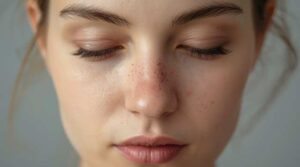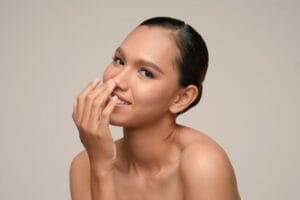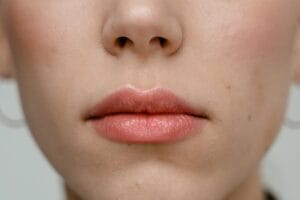Scars After Rhinoplasty: What to Expect and How to Heal
If you’re considering a nose job—or you’re in recovery already—you’re probably wondering about scars after rhinoplasty. Where do they show up, how visible are they, and how long do they take to fade? Here’s the short answer many patients want up front:
Featured answer: Most rhinoplasty scars are minimal and, in closed techniques, completely hidden inside the nostrils. Open rhinoplasty leaves a small incision across the columella that typically fades to a thin, barely noticeable line within months. Scar appearance depends on incision type, skin type, aftercare, sun protection, and surgeon technique.
That said, the details matter. Healing is not one-size-fits-all, and expectations should match your anatomy, the surgical approach, and how you care for your skin.
Where Do Scars After Rhinoplasty Form?
Moreover, most people are surprised to learn that many rhinoplasty incisions are hidden. Scar location depends on the surgical approach.
- Closed (endonasal) rhinoplasty: Additionally, incisions are placed inside the nostrils. There are no external scars. This is common for minor reshaping and some functional corrections.
- Open (external) rhinoplasty: Moreover, a short incision is made across the columella (the thin strip of skin between the nostrils), plus internal incisions. The external scar is typically a few millimeters long and, when well-placed, fades to a fine line.
- Alar base reduction: Likewise, if the nostril width is narrowed, small incisions at the nostril base (alar crease) may be used. These are placed in natural shadows to conceal them.
Even so, the small columellar scar after open rhinoplasty is the one patients ask about most. When it heals well, it’s hard to spot at conversational distance.
Open vs. Closed Rhinoplasty: Impact on Scars After Rhinoplasty
- Visualization: Furthermore, open rhinoplasty provides direct visibility for precise tip work and complex revisions.
- Complexity: Similarly, significant tip refinement, grafting, or revision cases often benefit from open access.
- Anatomy: Additionally, cartilage structure, skin thickness, and prior surgery scars can influence the approach.
However, neither technique is “better” across the board—surgeons match the approach to the goals and anatomy. For many patients, the potential for a small, subtle external scar is more than offset by the control and predictability of open techniques.
Scars After Rhinoplasty: Healing Timeline
Importantly, scar healing isn’t linear; it unfolds in distinct phases. Here’s a typical arc for scars after rhinoplasty:
- Weeks 0–2 (Inflammation): To start, incisions look pink or red. Swelling is most noticeable. The columellar scar may feel raised or firm.
- Weeks 2–6 (Proliferation): Next, collagen production increases. The scar might look redder before it gets lighter. It can feel thicker during this phase.
- Months 2–6 (Remodeling): Then, collagen reorients and softens. The scar gradually flattens and lightens.
- Months 6–12+ (Maturation): Finally, most scars settle substantially by 6 months, with continued subtle improvements up to 12–18 months.
Scars After Rhinoplasty: What’s Normal vs. Not
- Normal: Generally, pinkness, mild firmness, subtle itching, and gradual lightening are expected.
- Worth asking about: Conversely, persistent redness after 6 months, raised or spreading edges (hypertrophic scarring), or pale, depressed areas (atrophic scarring) warrant attention. Early guidance can improve outcomes.
Factors That Affect How Scars After Rhinoplasty Look
Additionally, several variables influence scar visibility. A few you can’t change—and several you can.
- Skin type and thickness: For example, thicker, oilier skin can be more prone to prolonged redness and swelling. Very thin skin may reveal tiny contour changes.
- Genetics and history: In addition, a personal or family history of keloids or hypertrophic scarring raises risk. Prior surgery scars offer clues.
- Incision placement and technique: Notably, tension-free closure, precise alignment, and meticulous suturing reduce widening and track marks.
- Aftercare and sun exposure: Likewise, UV can darken new scars. Consistent protection and skincare make a visible difference.
- Infection, early trauma, or smoking: Meanwhile, these can impair healing and worsen scarring.
Overall, a well-performed rhinoplasty plus diligent aftercare typically leads to scars that are hard to notice.
How to Minimize Scars After Rhinoplasty
First, follow your surgeon’s instructions. Beyond that, here are common, evidence-informed strategies discussed in facial plastic surgery practices.
Scar Care After Rhinoplasty: Gentle Wound Care and Hygiene
- To begin, keep incisions clean and dry as directed the first days after surgery.
- Additionally, avoid picking at crusts; use prescribed ointments or saline as instructed.
- Moreover, don’t submerge incisions until cleared (no pools, hot tubs early on).
Sun Protection for Scars After Rhinoplasty
- Specifically, use a broad-spectrum SPF 30+ on and around the nose once your surgeon allows. Reapply.
- Additionally, wear a brimmed hat and seek shade. UV exposure can darken new scars for months.
3) Scar Massage (When Cleared)
- Gently, light, consistent massage may help flatten and soften scars during remodeling.
- Crucially, only begin when your surgeon says it’s safe (usually a few weeks post-op).
Topicals That Help Scars After Rhinoplasty
- Commonly, medical-grade silicone gel or sheets are recommended to reduce redness and improve texture while a scar is maturing.
- Similarly, gentle moisturizers keep skin supple; avoid fragrance-heavy products on fresh incisions.
- Instead, avoid unproven “miracle” creams—choose products your surgeon recommends.
Lifestyle Choices to Support Rhinoplasty Scar Healing
- Above all, don’t smoke or vape nicotine; both impair blood flow and collagen remodeling.
- Also, maintain good nutrition and hydration. Protein and vitamin C support collagen synthesis.
- Finally, sleep with the head elevated in the early weeks to reduce swelling.
Treatments for Noticeable Scars After Rhinoplasty
In that case, if a scar remains raised, red, wide, or otherwise conspicuous after several months, your surgeon may recommend targeted treatments.
Laser and Light Therapies for Rhinoplasty Scars
- For redness, pulsed dye laser (PDL) helps reduce vascular prominence.
- For texture, fractional lasers (e.g., fractional CO2 or erbium) improve thickness and fine lines around the scar.
Steroid Injections for Hypertrophic Rhinoplasty Scars
- Often, these are helpful for hypertrophic or keloid-prone scars to soften and flatten tissue.
- Nevertheless, they are used judiciously to avoid thinning of surrounding skin.
Microneedling or RF Microneedling for Rhinoplasty Scars
- Additionally, this stimulates remodeling and can smooth subtle irregularities.
- Typically, it is performed in a series with topical support.
- When scars are widened or malpositioned, a brief procedure can reorient and reclose the incision with improved alignment.
- Usually, this is considered after the scar has matured.
When to Call Your Surgeon About Rhinoplasty Scars
Therefore, reach out sooner rather than later if you notice any of the following:
- For example, increasing redness, warmth, or drainage (possible infection)
- Additionally, rapidly growing, raised scar tissue
- Furthermore, persistent thickening, pain, or itch beyond early healing
- Finally, any concern that the scar is stretching or widening
Timely tweaks—like silicone therapy, taping to reduce tension, or early laser—can change the trajectory for the better.
Makeup, Camouflage, and Daily Life With Scars After Rhinoplasty
Once cleared (usually after sutures are out and the surface has sealed), gentle cosmetic camouflage can help:
- For color correction, a green-tinted primer can neutralize redness.
- For coverage, non-comedogenic concealers work well: dab, don’t drag; wash off thoroughly at day’s end.
- For safety, avoid exfoliants and retinoids near fresh incisions until your surgeon approves.
Sun-smart habits are still essential. Also, even with makeup that contains SPF, apply a separate, broad-spectrum sunscreen.
Managing Expectations for Scars After Rhinoplasty
In most cases, patients with open rhinoplasty end up with a thin, pale line along the columella that’s difficult to see in conversation, selfies, and day-to-day life. Under harsh, direct light or very close inspection, a line may be visible. That’s normal—and a good trade-off for the precision the approach enables, especially for complex shaping of the nasal tip.
If perfection is the expectation, talk candidly with your surgeon about your anatomy, skin behavior, and the likely end point. Good rhinoplasty is about harmony and balance, not microscopic invisibility.
Scars After Rhinoplasty: Frequently Asked Questions
Will I always have a visible scar after open rhinoplasty?
A faint line may remain, but with good technique and care, most columellar scars are hard to detect. Many patients can’t find their scar without a mirror and bright light after several months.
How long until my scar looks “normal”?
Typically, plan on several months for major changes, with continued subtle improvements up to a year or more. Protect it from the sun during this entire period.
Can I prevent a bad scar if I’m prone to keloids?
Share your history with your surgeon. Prophylactic strategies (silicone, taping to reduce tension, early laser, and, in select cases, low-dose steroid injections) can help manage risk, though no method eliminates it entirely.
Are there non-surgical alternatives that avoid scars?
By contrast, non-surgical “liquid rhinoplasty” using fillers can refine small irregularities or asymmetries without incisions, but it doesn’t reduce size or reshape cartilage. It’s also temporary and carries different risks.
Key Takeaways
- Generally, most scars after rhinoplasty are minimal; closed approaches leave no external scars.
- Additionally, open rhinoplasty’s small columellar scar typically fades to a thin, subtle line.
- Furthermore, sun protection, silicone therapy, and gentle care significantly improve outcomes.
- Otherwise, if a scar remains prominent after several months, early evaluation opens more options.
- Ultimately, realistic expectations—combined with a skilled surgeon—lead to the best results.
Closing Thought: Your scar is just one small part of a much bigger picture: a nose that fits your face and helps you breathe comfortably. With thoughtful planning and consistent aftercare, most patients end up with results they love—and scars most people never notice.













